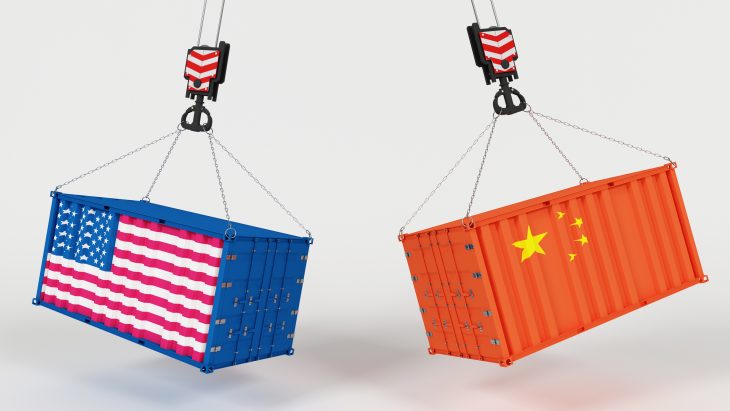The “phase one” China-U.S. trade agreement, which takes effect at the end of this week, calls for China to buy $40 billion a year of U.S. food, agricultural, and seafood products this year and in 2021. Yet there will be limited immediate impact on U.S. sales overall, USDA analysts indicated on Tuesday.
In its monthly WASDE report, effectively a crop report for the world, the USDA raised its forecast of U.S. exports of soybeans by 3% and pork by 4% but stood pat on cotton and sorghum. It boosted its forecast of Chinese imports of soybeans by nearly 4%, but the imports would remain well below the volumes recorded before the trade war. No change was forecast in cotton imports.
China is the world’s largest importer of soybeans, cotton, and sorghum. The U.S. is the leading cotton exporter and ranks second in soybeans. A quarter of U.S. pork is exported and China, the largest pork producer and consumer, was the No. 5 customer before the trade war.
“By and large, not a lot of changes” were made in export forecasts, said chief economist Rob Johansson in a USDA Radio News interview.
The WASDE report gauges global demand for U.S. products, not bilateral trade, such as American-grown soybeans to China. “An increase in exports to China oftentimes will come from a decrease in exports to another part of the globe,” said Johansson.
There’s another way in which WASDE is an inexact guide: It forecasts exports in terms of marketing years for each crop but the U.S.-China agreement is based on calendar-year purchases. Traditionally, China’s biggest purchases are made during the U.S. fall harvest season. It shifts to South American suppliers early in the calendar year, when crops mature in Brazil and Argentina and prices are lower than in the United States. “Given the seasonality of marketing patterns, which is recognized in the agreement, China’s purchases will likely be captured over multiple forecast years, depending on the commodity,” said a USDA paper issued last week.
In its paper, the USDA said it would adjust its trade forecasts to reflect ongoing Chinese purchases as part of a broader estimation of supply, demand, economic factors, and market variables around the world. Beginning this month, USDA trade projections “will fully consider all publicly available information on the agreement as well as any new market or policy developments that would affect those forecast.” The administration has not made public any commitments in the agreement for purchases of specific commodities.
“USDA clearly chose (to) assume no impact of the phase one agreement with China,” said economist Scott Irwin of the University of Illinois on social media. Private analyst Arlan Suderman said USDA’s decision to increase its estimate of soybean exports by 50 million bushels, to 1.825 billion bushels “is clearly its interpretation of the objective of phase one.”
The USDA will face demands for a full analysis of the impact of the U.S.-China pact when it issues its quarterly forecast of U.S. ag exports on February 20, the opening day of USDA’s annual Ag Outlook Forum. Exports are now estimated at $139 billion, up 2.5% from fiscal 2019. The Outlook for U.S. Agricultural Trade goes into detail on economic conditions, imports by country, and changes in commodity flow. In the November forecast, China was forecast to import $11 billion of agricultural products, half of its imports before the trade war, when it was the No. 1 market for U.S. farm products.
Johansson, the USDA chief economist, is scheduled to give one of the opening speeches at the Outlook Forum. He will be expected to describe the phase one agreement as part of a discussion of the agricultural economy and its prospects in the year ahead.
For many people, “this agreement seems so amorphous,” says Joe Glauber, Johansson’s predecessor. The starting point for measuring Chinese purchases is described hazily, there are conflicting descriptions of how purchases will be valued, the White House has provided only general descriptions of China’s commitments, and there is skepticism about whether China can meet the ambitious targets. “There will not be 100% additionality,” he said, if China makes large purchases because it may divert U.S. products from other markets.
By- Successful Framing



